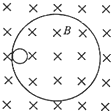Throughout history, people have been interested in knowing how language first began, but no one knows exactly where or how this happened. However, we do know a lot about languages, the language of today and also the languages of earlier times. There are probably about three thousand languages in the world today. Chinese is the language with the most speakers. English, Russian and Spanish are also spoken by millions of people. On the other hand, some languages in the world have less than one hundred speakers.
There are several important families of languages in the world. For example, most of the languages of Europe are in one large family called Indo-European. The original language of this family was spoken about 4,500 years ago. Many of the present-day languages of Europe and India are modern forms of the language of 4,500 years ago.
Languages are always changing. The English of today is very different from the English of 500 years ago. In time, some even die out completely. About 1,000 years ago, English was a little known relative of German spoken on one of the borders of Europe.
If a language has a number of speakers, or if it is very old, there may be differences in the way it is spoken in different areas. That is, the language may have several dialects. Chinese is a good example of dialect differences. Chinese has been spoken for thousands of years by many millions of people. The differences between the dialects of Chinese are so great that speakers of Chinese from some parts of China can’t understand speakers from other parts.
小题1:The first paragraph mainly tells us that_______.
A.most people in the world speak Chinese
B.there are thousands of languages in today’s world
C.man has much knowledge about languages
D.some people know several languages小题2:Most European and Indian languages_______.
A.will soon die out completely
B.were once a relative of English
C.are no longer spoken
D.come from the same family of language.小题3:Which of the following statements is true according to the passage?
A.Chinese is the language with the most speakers.
B.English was a well-known relative of German spoken on one of the borders of Europe.
C.A language has many speakers, but there may be no differences in the way it is spoken in different areas.
D.Speakers of Chinese from some parts of China can understand speakers from other parts.小题4:It is considered a most difficult thing for one to learn to speak Chinese because_______.
A.there are great differences between the dialects of Chinese
B.Chinese and many foreign languages are not of the same family
C.Chinese is a very old language
D.there are great differences between the old Chinese and the present-day Chinese小题5:The underlined word “dialect” in the last paragraph means_______.
A.a special language spoken by Chinese
B.the sign used by Chinese people in a special area
C.the difference between the old and today’s Chinese
D.the form of a language used in one part of the country

 +
+ →
→
 →
→ +
+
 +
+ →
→
 →
→ +
+

